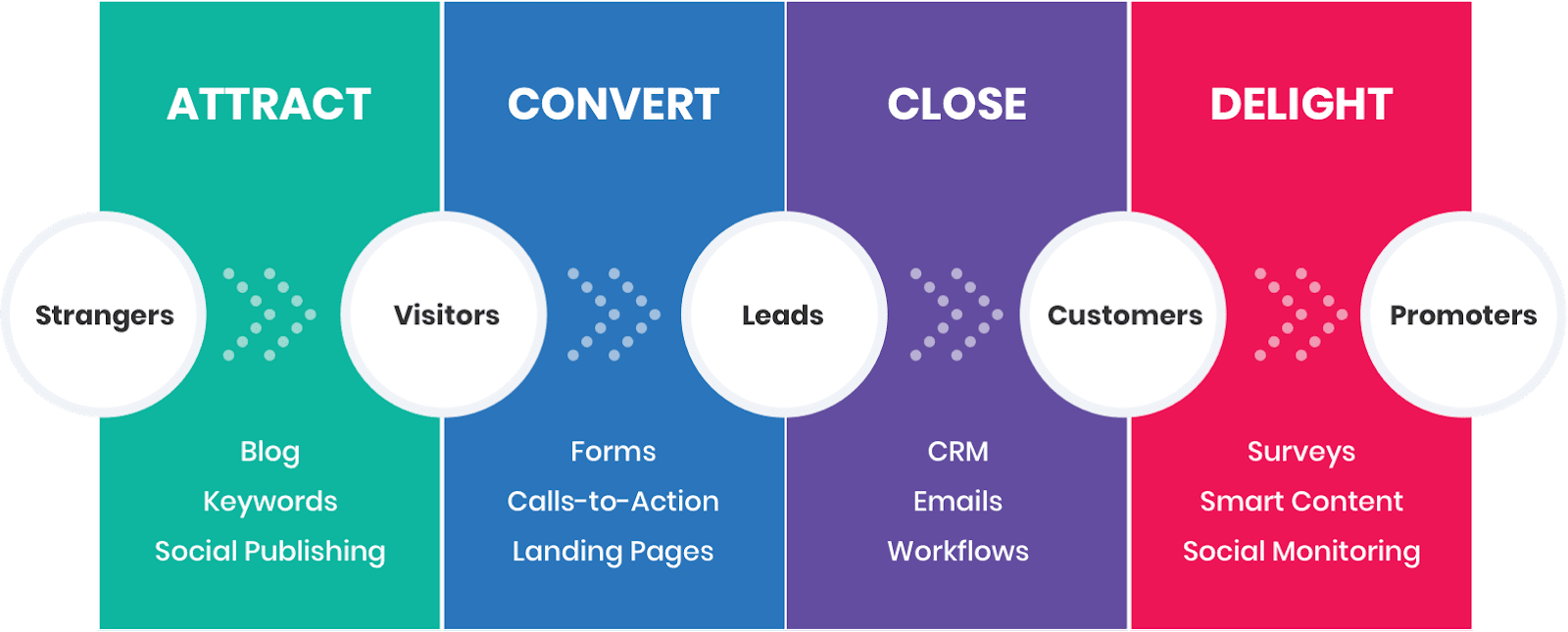
Inbound Marketing vs Outbound Marketing 2022
BLOG
- 13min
Category:
Marketing
Date:
December 26, 2019

The way in which prospective customers research their options and ultimately make their purchases are always evolving.
It is the responsibility of marketers to ensure that their campaigns are meeting those prospects wherever they are in their journey.
But which method works best? Which is the right one?
When it comes to prominent categories in marketing, there are two types to be aware of - inbound marketing and outbound marketing.
Both serve the purpose of advertising your brand to a specific audience.
There are key differences that can determine whether an inbound or outbound marketing strategy is best for your specific business needs.
In this article, we will go over and compare inbound marketing vs outbound marketing. In the end you can see where one or the other can fit in your next digital advertising campaign.
Table Of Contents
1. What is Outbound Marketing
2. “Effectiveness” of Outbound Marketing
3. What Is Inbound Marketing
4. Efficacy of Inbound Marketing
5. Developing an Inbound Marketing Strategy
What is Outbound Marketing?
Outbound Marketing AKA “classic or spray and pray” marketing is a marketing tactic used by companies to initiate the conversation with consumers by sending messages out to them.
These messages come in the form of television commercials, telemarketers, billboards, radio ads, and email spam.
In this day and age, most methods of outbound marketing are considered by many to be annoying.
Think about how many times this week you have deleted a spam email, closed a pop-up ad window or clicked “Skip Ad” on a YouTube video.
• About 84% of young adults between the ages of 25 and 34 have exited a website due to pop-ups or flashy banner ads.
Outbound marketing not only can feel intrusive, it also often fails to reach the intended target audience.
• Approximately 91% of email users have unsubscribed from an emailing list due to irrelevant content.
“Effectiveness” of Outbound Marketing
Well, outbound marketing is not a very efficient way for businesses to market. It is hard to track the return on investment (ROI) , it has difficulty producing lead conversions, and it is becoming less effective with every day that passes.
Outbound marketing costs more than other forms of marketing.
With this information in mind, it is safe to assume that while outbound marketing tactics have their place, they are often viewed as a nuisance.
There is simply little point in sending out content to people who are not interested in what your company has to offer or the message it is sending.
What is Inbound Marketing
Inbound marketing is a more non-invasive advertising technique that allows customers to come to you.
• Approximately 71% of consumers prefer to learn about a brand through dynamic content as opposed to ads.
Content marketing ties in closely to inbound marketing where you generate branded content your target audience is actively seeking out.
• Compared to traditional marketing techniques, inbound marketing generates about 3x as many hot leads.
Inbound marketing can come in the form of blogs, SEO, social media, and email marketing campaigns.
Typically, this type of marketing aligns with where the customer is currently in your sales funnel.

Efficiency of Inbound Marketing
Inbound marketing is more popular because it is truly effective. It involves attracting and nurturing promising leads, using content to provide valuable information to customers, and in the process build trust with your clients.
A survey that half of the companies who started using inbound marketing saw a 25% increase in ROI.
Inbound marketing had 30 times the lead conversion rate of outbound marketing.
When asked which marketing tactic actually resulted in the most high-quality leads, 59% of marketers said inbound.

Developing an Inbound Marketing Strategy
If you are looking to develop an inbound marketing strategy that works, start with your brand’s website. Creating a blog, for instance, will open many doors and attract potential customers to your site.
If your blog is good, it will help you retain customers as well.
Blogs are one of the most effective ways to increase and improve your SEO, driving more organic search engine traffic to your site. Websites with blogs have 434% more indexed pages and 97% more inbound links than websites that don’t. If you are looking to drive traffic to your business through search engines, you need a blog.
SEO starts your relationship with consumers when they enter a search into their search engine. Using PPC campaigns, Google AdWords, and SEO keyword research.
You can get your website, blog, and other online content to rank high in search engines so that it will draw consumers to your business.
It is important to rank high because the very top listing on Google’s search engine results pages (SERP) gets 33% of the search traffic, while the second gets 17% of search traffic. In other words, if you don’t snap up the lead search ranking for your product or service, a competitor will.
Social media is a powerful tool for your business. The best way to increase your business’s visibility is by the right social media platforms.
Social media builds your brand, increases customer loyalty, and allows you to directly interact with customers. 71% of customers who had positive social media experiences with a company were likely to recommend that business.
Finally, your email campaigns are the last step in inbound marketing. You can create email campaigns that kick off with specific triggers. For example, when someone signs up for your newsletter or email list, send them a welcome email.
This can be the first in a series of targeted email messages that can improve your sales and keep your audience engaged with your brand.
Now that you can see the differences between inbound and outbound marketing, it is up to you to decide, if and how you want to use them in your digital marketing strategy. This can be a difficult decision to make, but it is a critical one to get right. Inbound marketing has evolved substantially over the past few years and is likely prove to be more effective in 2021, 2022, and beyond.
Get Updates every Week!
Thank you! Your submission has been received!
Oops! Something went wrong while submitting the form.






